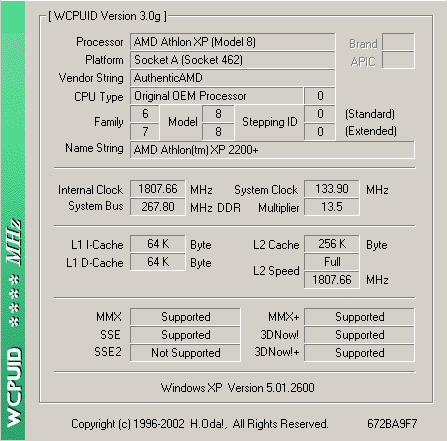A New Kind Of Fast: AMD Athlon XP 2200+
Clock Increase And Heat Dissipation
By switching to 0.13-µm technology, the power consumption and core voltage of the Athlon XP with the Thoroughbred core will sink drastically. However, this only applies to the "smaller" models with lower clock frequencies. The table below shows that only the Athlon XP 1700+, 1800+ and 1900+ work with a significantly lower core voltage of 1.5 Volt. The heat dissipation is clearly lower with only three of the processors, if you compare them to the same Athlon XP models with the Palomino core.
The new top-of-the-line Athlon XP 2200+, however, works which a voltage of 1.65 Volt - which is a difference of only 0.1 Volt compared to its predecessor.
Viewed with a critical eye, you can determine that decrease in die size has not made much of a difference in heat dissipation, because at a maximum heat dissipation of 67.0 Watt, the Athlon XP 2200+ with Thoroughbred core emits only 4.1 Watt less than the Athlon XP 2100+ with the Palomino core. In total, the heat dissipation of the top Thoroughbred model has an advantage of 5.7% over the Palomino. Therefore, the Athlon XP 2200+ remains in a hot spot, despite the 0.13-µm technology.
Athlon XP 2200+ in operation during testing.
The Thoroughbred is recognized by the software as "Model Number 8"!
Get Tom's Hardware's best news and in-depth reviews, straight to your inbox.
Current page: Clock Increase And Heat Dissipation
Prev Page Greater Yield: 322 Athlon-CPUs Per Wafer Next Page Overclocking: Not A Whole Lot Possible
